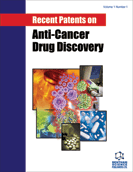
Abstract
Digestive system neoplasms are highly heterogeneous and exhibit complex resistance mechanisms that render anti-programmed cell death protein (PD) therapies poorly effective. The tumor microenvironment (TME) plays a pivotal role in tumor development, apart from supplying energy for tumor proliferation and impeding the body's anti-tumor immune response, the TME actively facilitates tumor progression and immune escape via diverse pathways, which include the modulation of heritable gene expression alterations and the intricate interplay with the gut microbiota. In this review, we aim to elucidate the mechanisms underlying drug resistance in digestive tumors, focusing on immune-mediated resistance, microbial crosstalk, metabolism, and epigenetics. We will highlight the unique characteristics of each digestive tumor and emphasize the significance of the tumor immune microenvironment (TIME). Furthermore, we will discuss the current therapeutic strategies that hold promise for combination with cancer immune normalization therapies. This review aims to provide a thorough understanding of the resistance mechanisms in digestive tumors and offer insights into potential therapeutic interventions.
Keywords: Immunotherapy resistance, normalization cancer immunotherapy, PD-1/B7-H1, anti-PD-1/PD-L1 therapy, digestive system neoplasms, pancreatic cancer.
Recent Patents on Anti-Cancer Drug Discovery
Title:Mechanisms of Anti-PD Therapy Resistance in Digestive System Neoplasms
Volume: 20 Issue: 1
Author(s): Yuxia Wu, Xiangyan Jiang, Zeyuan Yu*, Zongrui Xing, Yong Ma and Huiguo Qing
Affiliation:
- Department of General Surgery, Lanzhou University Second Hospital, Lanzhou, Gansu, China
Keywords: Immunotherapy resistance, normalization cancer immunotherapy, PD-1/B7-H1, anti-PD-1/PD-L1 therapy, digestive system neoplasms, pancreatic cancer.
Abstract: Digestive system neoplasms are highly heterogeneous and exhibit complex resistance mechanisms that render anti-programmed cell death protein (PD) therapies poorly effective. The tumor microenvironment (TME) plays a pivotal role in tumor development, apart from supplying energy for tumor proliferation and impeding the body's anti-tumor immune response, the TME actively facilitates tumor progression and immune escape via diverse pathways, which include the modulation of heritable gene expression alterations and the intricate interplay with the gut microbiota. In this review, we aim to elucidate the mechanisms underlying drug resistance in digestive tumors, focusing on immune-mediated resistance, microbial crosstalk, metabolism, and epigenetics. We will highlight the unique characteristics of each digestive tumor and emphasize the significance of the tumor immune microenvironment (TIME). Furthermore, we will discuss the current therapeutic strategies that hold promise for combination with cancer immune normalization therapies. This review aims to provide a thorough understanding of the resistance mechanisms in digestive tumors and offer insights into potential therapeutic interventions.
Export Options
About this article
Cite this article as:
Wu Yuxia, Jiang Xiangyan, Yu Zeyuan*, Xing Zongrui, Ma Yong and Qing Huiguo, Mechanisms of Anti-PD Therapy Resistance in Digestive System Neoplasms, Recent Patents on Anti-Cancer Drug Discovery 2025; 20 (1) . https://dx.doi.org/10.2174/0115748928269276231120103256
| DOI https://dx.doi.org/10.2174/0115748928269276231120103256 |
Print ISSN 1574-8928 |
| Publisher Name Bentham Science Publisher |
Online ISSN 2212-3970 |
 16
16
- Author Guidelines
- Graphical Abstracts
- Fabricating and Stating False Information
- Research Misconduct
- Post Publication Discussions and Corrections
- Publishing Ethics and Rectitude
- Increase Visibility of Your Article
- Archiving Policies
- Peer Review Workflow
- Order Your Article Before Print
- Promote Your Article
- Manuscript Transfer Facility
- Editorial Policies
- Allegations from Whistleblowers
Related Articles
-
Editorial
Current Molecular Medicine Effects of Secondhand Smoke on Thyroid Function
Inflammation & Allergy - Drug Targets (Discontinued) Nanocapsulated Ascorbic Acid in Combating Cerebral Ischemia Reperfusion- Induced Oxidative Injury in Rat Brain
Current Alzheimer Research Tailoring Antiplatelet Therapy: A Step Toward Individualized Therapy to Improve Clinical Outcome?
Current Pharmaceutical Design Acute Inflammation and Oxidative Stress Induced by Lipopolysaccharide and the Ameliorative Effect of Stingless Bee Honey
Combinatorial Chemistry & High Throughput Screening Insulin Resistance and Polycystic Ovary Syndrome
Current Pharmaceutical Design Molecular Targets of Rheumatoid Arthritis
Inflammation & Allergy - Drug Targets (Discontinued) The Effects of Sevoflurane or Remifentanil on the Stress Response to Surgical Stimulus
Current Pharmaceutical Design Regulation of Platelet Function by Acetylation/Deacetylation Mechanisms
Current Medicinal Chemistry Invasive and Non-Invasive Electrical Neuromodulation in Trigeminal Nerve Neuralgia: A Systematic Review and Meta-Analysis
Current Neuropharmacology Nigella sativa L. and Its Bioactive Constituents as Hepatoprotectant: A Review
Current Pharmaceutical Biotechnology MicroRNAs: Tiny but Not Trivial
Current Genomics Subject Index to Volume 7
Combinatorial Chemistry & High Throughput Screening Connexins, Diabetes and the Metabolic Syndrome
Current Protein & Peptide Science Caveolin Involvement and Modulation in Breast Cancer
Mini-Reviews in Medicinal Chemistry Clinical Grade Stem Cell Culture
Recent Patents on Regenerative Medicine Malignant Mesothelioma Resistance to Apoptosis: Recent Discoveries and their Implication for Effective Therapeutic Strategies
Current Medicinal Chemistry Chloride Channels − New Targets for the Prevention of Stroke
Current Vascular Pharmacology A Novel Approach to Transformer Fault Diagnosis Based on Transfer Learning
Recent Advances in Electrical & Electronic Engineering High-Sensitivity C-Reactive Protein and Lipoprotein-Associated Phospholipase A2 in Predicting Recurrence and Severity of Stenosis in Symptomatic Intracranial Atherosclerotic Disease
Current Proteomics

























